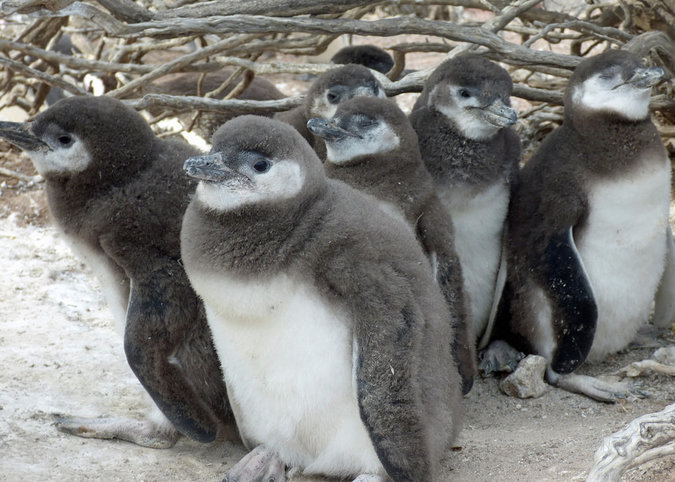Sublime Text 2 is a text editor for OS X, Linux and Windows, currently in beta.

 Add a new command, similar to prevView/nextView but this command just shows/selects the previously selected tab.
Add a new command, similar to prevView/nextView but this command just shows/selects the previously selected tab.
So I can switch easily between two tabs without using the mouse.
It should work nice with all layouts too, even if the two views (current and pre-current) are of the same file in different sections.


 PHP snippets don't work if there isn't a closing PHP tag
PHP snippets don't work if there isn't a closing PHP tag

 Add prefix/suffix to selection
Add prefix/suffix to selection


 completion dropdown widget flickers on other monitor before appearing
completion dropdown widget flickers on other monitor before appearing

 UnboundLocalError: local variable 'downloader' referenced before assignment
UnboundLocalError: local variable 'downloader' referenced before assignment
(Okay, pasting traceback in UserEcho seems a bad idea.)
Sublime Package Control crashes at Package Control.py, Line 999.
Looking at the source code, it looks like there is a chance when `downloader` hasn't been introduced to the local namespace. This makes my plugins managed by Package Control completely unusable.
I've currently padded
downloader = None
just before the if statement to get the error message to properly print.

 Nevermind, already implemented...
Nevermind, already implemented...

 Crown Capital management environmental monitoring: For Already Vulnerable Penguins, Study Finds Climate Change Is Another Danger
Crown Capital management environmental monitoring: For Already Vulnerable Penguins, Study Finds Climate Change Is Another Danger
Life has never been easy for just-hatched Magellanic penguins, but climate change is making it worse, according to a decades-long study of the largest breeding colony of the birds.
The chicks are already vulnerable to predation and starvation. Now, the study at Punta Tombo, Argentina, found that intense storms and warmer temperatures are increasingly taking a toll.
“Rainfall is killing a lot of penguins, and so is heat,” said P. Dee Boersma, a University of Washington scientist and lead author of the study. “And those are two new causes.”
Climate scientists say more extreme weather, including wetter storms and more prolonged periods of heat and cold, is one impact of a climate that is changing because of emissions of greenhouse gases in the atmosphere. While monitoring the penguin colony, Dr. Boersma and her colleagues also documented regional temperature changes and increases in the number of days with heavy rains.
The study, which is being published online Wednesday in the journal PLoS ONE, is one of the first to show a direct impact of climate change on seabirds. Most studies have looked at how warming temperatures affect animals indirectly, by altering predation patterns or food supplies.
William J. Sydeman, senior scientist at the Farallon Institute in California, who was not involved in the research, said the study linked changes in climate, which occur on a scale of decades, to the daily scale of life in the colony. “That’s a unique contribution,” he said.
The colony at Punta Tombo, in a temperate and relatively dry region about midway along Argentina’s coast, is home to about 200,000 breeding pairs of the penguins, which are about 15 inches tall as adults. Dr. Boersma has been working there since 1982, with long-term support from the Wildlife Conservation Society.
For this study, the researchers compiled data on nearly 3,500 chicks that they meticulously tracked by checking nests once or twice a day throughout the six-month breeding season, which starts in September.
“We knew when each chick hatched, and its fate,” Dr. Boersma said.
Typically, nearly two-thirds of hatchlings at the colony do not survive to leave the nest. In most years, the researchers found, starvation and predation — by other seabirds and small animals — caused the majority of the deaths.
But they found that heavy storms killed birds in 13 of the 28 years of the study. In two years, storms were responsible for most of the deaths. Extreme heat killed more hatchlings as well, although the effect was less pronounced.
Like other young birds, penguin hatchlings can die from hypothermia if their down gets wet and loses its insulating air spaces. The birds are most vulnerable from about a week after hatching — before that they are largely protected by a parent — to about six weeks, when they develop waterproof plumage.
“They didn’t used to have to contend with this variability in the climate,” Dr. Boersma said. “And they certainly didn’t have to contend with all this rainfall.” …….continue reading @ http://crownecomngment.newsvine.com
http://crowncapitalmngt.com/
https://twitter.com/crownecomngment/

Weather extremes are leading to an increase in penguin chick mortality in a large breeding colony in Argentina.
Source: http://blog.crowncapitalmngt.com/for-already-vulnerable-penguins-study-finds-climate-change-is-another-danger/

 Crown Eco Reviews Waste equals energy: The biomass equation | JIGSY
Crown Eco Reviews Waste equals energy: The biomass equation | JIGSY
The Sustainable Australia Report 2013 advises that global
trends such as population growth and growth of the middle class in Asia will
place increasing demands on energy, water and food systems. In Australia one
such impact, caused by population growth within its major cities, is the
increased cost of waste landfill as sites reach capacity limits.
Biomass waste-to-energy systems help address this issue by reducing both landfill and reliance on fossil fuels.
What is biomass?
Fossil fuels are formed from biomass and while both can produce energy, biomass is sourced from the atmosphere as part of the planet’s balanced carbon cycle, and can be therefore considered “carbon neutral”.
Biomass is organic matter including forest and mill residues, agricultural crops and wastes, wood and wood wastes, animal wastes, livestock operation residues, fast growing trees and plants, industrial and some municipal wastes such as construction and demolition wastes. Biomass is the only renewable energy source that can provide on-demand energy, heat and electricity, as well as carbon-based fuels.
Selecting the right biomass energy system
There are several processing technologies to convert biomass into energy, each with specific application depending on the biomass resource. These are typically thermal (direct combustion, pyrolysis, gasification), or biological (anaerobic, fermentation) processes. | Environmental news…
Since thermal processes are the most flexible, as they can process all forms of biomass, and the majority of proven commercial applications for heat and power utilise direct combustion and gasification technologies, this article will focus on these two technologies
Fuel supply | Most projects only consider the biomass fuels that are readily available at the time they are initiated. However, after five years, many plants operate with a very different fuel mix to that for which the plant was originally designed. It is therefore important to select a technology that allows for changes in fuel composition, for example, different energy value, moisture content, density and size. Also, the chosen technology should have the ability to accept fuels in liquid or gaseous form.
Environmental / Permit issues | Public opinion can have a significant influence on the ease or difficulty that a project experiences during the planning and permitting stages. To avoid potential difficulties, the technology should be demonstrably the best available to minimise emissions and environmental impacts.
The technology supplier | It is important to question both the maturity of the technology and the experience of the supplier. Is the technology innovative yet commercially proven? Is it out-dated? Or is it a research and development project in disguise? Is the supplier a recent start-up or an established company with many references to its name? What about the financial strength of the supplier? And finally, will the project investors and lenders support the project based on the selected technology supplier?
Thermal biomass systems
A thermal biomass energy system is comprised primarily of a fuel handling system and a biomass boiler system.
Fuel receiving and handling system | The fuel receiving and handling system can be very simple or highly automated, depending on the fuel and the plant operating philosophy. It will normally include weighing, unloading, screening, storage, reclaiming and transfer systems and should be designed to ensure reliable, consistent fuel supply to the biomass boiler.
Biomass boiler system | There are a number of biomass boiler technologies that convert biomass to steam or energy, however, for this article, we will consider only mature commercialised technologies. These are suspension fired boilers, grate boilers and fluidised bed boilers.
1. Suspension fired boilers | Suspension fired boilers consist of a horizontally mounted tube, or combustion chamber, with an open end. A fan blows combustion air into the boiler, and fuel is introduced from the side with high velocity air. Combustion is promoted when fuel and air mix as they swirl through the combustion chamber. Hot gases exit at the open end. The suspension fired boiler normally has the lowest capital cost, however it has limitations. Fuel needs to be sized to ≈5mm or less and must have less than 15% moisture (wet basis). The burner typically operates above 1250oC, and this causes thermal NOx to be formed. In addition, a percentage of the nitrogen contained in the fuel is converted to NOx during combustion. The NOx generated can be partly alleviated by selective non-catalytic reduction (SNCR) but the effectiveness of this treatment is limited because of the short reaction time available due to the boiler design.
2. Grate or stoker boilers | Grate boilers are available in many forms including slotted, pinhole, shaker and traveling. The grate supports a bed of fuel that allows air to pass up through the bed. The bed typically contains up to 45 minutes of fuel inventory; a feature that limits the boiler’s ability to adjust quickly to load changes or variations in the fuel composition heating value. The fixed grate spacing restricts the ability to switch fuels, (for example wood chips to sawdust). Moisture must be kept quite constant, and since the burner operates above 1200oC, thermal NOx is an issue, as per the suspension type boilers.
3. Fluidised bed boilers | Fluidised bed boiler technology can be used in thermal oxidation and gasification operations, and has the advantage of inherently lower emissions and greater fuel flexibility. The fluidised bed comprises a layer of sand-like material that is suspended by an upward flowing stream of air. When the air velocity is sufficient to lift the sand particles and keep them in suspension, the bed resembles a violently boiling pot of water, hence the term “fluidised bed”. The turbulence in the bubbling bed acts to efficiently spread the fuel as it is fed to the boiler and the sand particles act to abrade the fuel as it is oxidised to expose fresh fuel to the combustion process. These systems are flexible because they can accept a wide variety of fuels (singly or blended) through the same plant even with varying moistures (5%-55%) and high ash contents (55%). Fluidised bed systems typically have stable operating characteristics because the turbulent nature of the operation results in even distribution of temperature and oxygen. Fluidised bed thermal oxidation and gasification processes will be described here.

 Academy Manager - Westhill Consulting Business
Academy Manager - Westhill Consulting Business
Over the years there have been many interesting approaches, and solutions that help in ensuring that the Academy was not only intellectual adventure, an opportunity to break away from work and integration with colleagues. How to make the knowledge is in the minds and change attitudes and skills have turned into habits of daily use at work? have presented innovative solutions to support the Academy include: - effective sourcing engagement academy participants (focus groups) - show planning method based academy of Success Case Method - no matter what you have learned, it's important that you applied " - effective solutions - we will show examples of reinforcement tools to be used between training modules: gadgets substantive knowledge of film pills - How to connect the academy with the implementation of a competency model? - In a practical way rehearse together design selected item academy. Thank you for participating, under presentation of the lecture:
HR Breakfast
Concept development managers - Developing Through Challenges
Breakfast will be held on 15 January 2014 from 8.30 - 12.00 in the restaurant Halka Street. Lord 85 in Warsaw.
Research on the effectiveness of development managers confirm that training is only 10 percent. impact on their development.
70 percent. the effects are, in turn, properly selected tasks in the workplace.
What to do in order to successfully develop managerial staff?
During the January Breakfast Dr. Victor Vekselberg HR and Mieszko May, consultants from the Institute for the Analysis. Karl Gauss Sp. Ltd., will present the results of research on the effectiveness of different forms of development managers.
The meeting will be devoted to the presentation and discussion of the concept of development managers - Developing Through Challenges with concrete examples of the application in practice and open discussion and exchange of experiences.
Before breakfast we invite you to read the article studies refute the myths about developing managers published in the yearbook Employer Handbook 2013, which can be found in the annex to the invitation.
For More Information:
Westhill Consulting
Служба підтримки клієнтів працює на UserEcho


